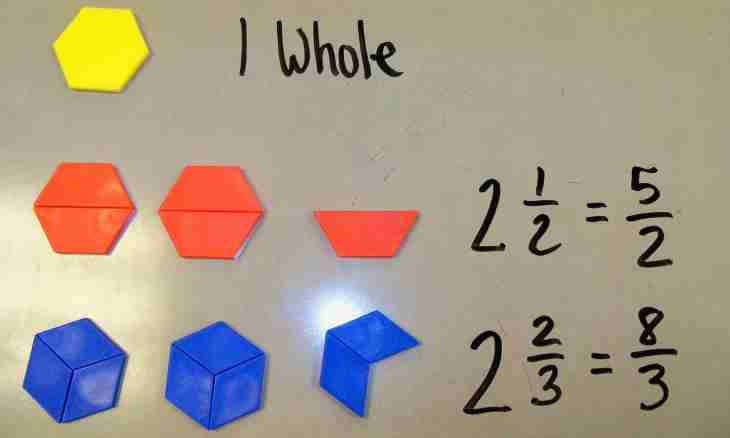Faces decimal fractions of people constantly. It both bank calculations, and utility payments, and various measurements. It is necessary to master ways of action with them even in case you constantly carry with yourself the calculator. It is necessary to enter into it correctly data and at least approximately to imagine what has to turn out as a result. The denominator of such fraction always represents number, multiple to ten. It is usually not written, and separate in comma numerator so many signs, how many categories in a denominator.
It is required to you
- - calculator;
- - sheet of paper;
- - handle.
Instruction
1. Learn to transfer decimal fractions to ordinary. Consider how many signs are separated by a comma. One figure to the right of a comma means that a denominator — 10, two — 100, three — 1000 and so on. For example, the decimal fraction 6.8 is read as "six whole, eight tenth". At its transformation in ordinary write at first the number of the whole units — 6. In a denominator write 10. In numerator there will be number 8. It will turn out that 6.8 = 6 8/10. Remember rules of reduction. If the numerator and a denominator are divided into the same number, then the fraction can be reduced by a common divisor. In this case this number 2. 6 8/10 = 6 2/5.
2. Try to put decimal fractions. If you do it in a column, then be attentive. Categories of all numbers have to be strictly the friend under the friend, and a comma — under a comma. Rules of addition just the same, as well as at action with integers. Add besides to number 6.8 other decimal fraction — for example, 7.3. Write down the three under the eight, a comma — under a comma, and the seven — under the six. Begin to put from the last category. 3+8=11, that is 1 write down, 1 remember. Further put 6+7, receive 13. Add what remained in mind and write down result — 14.1.
3. Subtraction is carried out by the same principle. Write down categories the friend under the friend, a comma — under a comma. Be guided always on it, especially if the number of figures after it in reduced less, than in deductible. Take away from the set number, for example, 2.139. The two write down under the six, unit — under the eight, other two figures — under the following categories which can be designated by zero. It will turn out that reduced not 6.8, but 6.800. Having performed this operation, you receive as a result 4.661.
4. Operations with negative decimal fractions are performed just as with integers. At addition minus is taken out for a bracket, and the set numbers are written in brackets, and between them plus is put. As a result the negative number turns out. That is at addition-6.8 and-7.3 you receive the same result 14.1, but with the sign "" -"" before it. If subtracted more reduced, then minus is taken out for a bracket too, smaller is subtracted from bigger number. Subtract from 6.8 number-7.3. Transform expression as follows. 6.8 - 7.3 = - (7.3 — 6.8) =-0.5.
5. To increase decimal fractions, for a while forget about a comma. Multiply them as if before you integers. After that count the number of the signs standing on the right after a comma in both factors. Separate as much signs and in the work. Having multiplied 6.8 and 7.3, as a result you receive 49.64. That is to the right of a comma you will have 2 signs while in a multiplicand and their multiplier was on one.
6. Divide the set fraction into some integer. This operation is performed just as with integers. The main thing is not to forget about a comma and at the beginning to put 0 if the number of the whole units is not divided into a divider. For example, try to divide the same 6.8 into 26. At the beginning put 0 as 6 it is less, than 26. Separate it a comma, the tenth and 100-th will already go further. As a result about 0.26 will turn out. Actually in this case the recurring acyclic decimal which can be rounded to the necessary degree of accuracy turns out.
7. At division of two decimal fractions use property that at multiplication of a dividend and divider by the same number private does not change. That is transform both fractions to integers, depending on that how many signs cost after a comma. If you want to divide 6.8 into 7.3, it is enough to increase both numbers by 10. It will turn out that it is necessary to divide 68 into 73. If in one of numbers of categories after a comma it is more, transform to an integer at first it, and then and the second. Increase it by the same number. That is at division 6.8 on 4.136 increase a dividend and a divider not in 10, and by 1000 times. Having divided 6800 into 1436, receive as a result 4.735.

